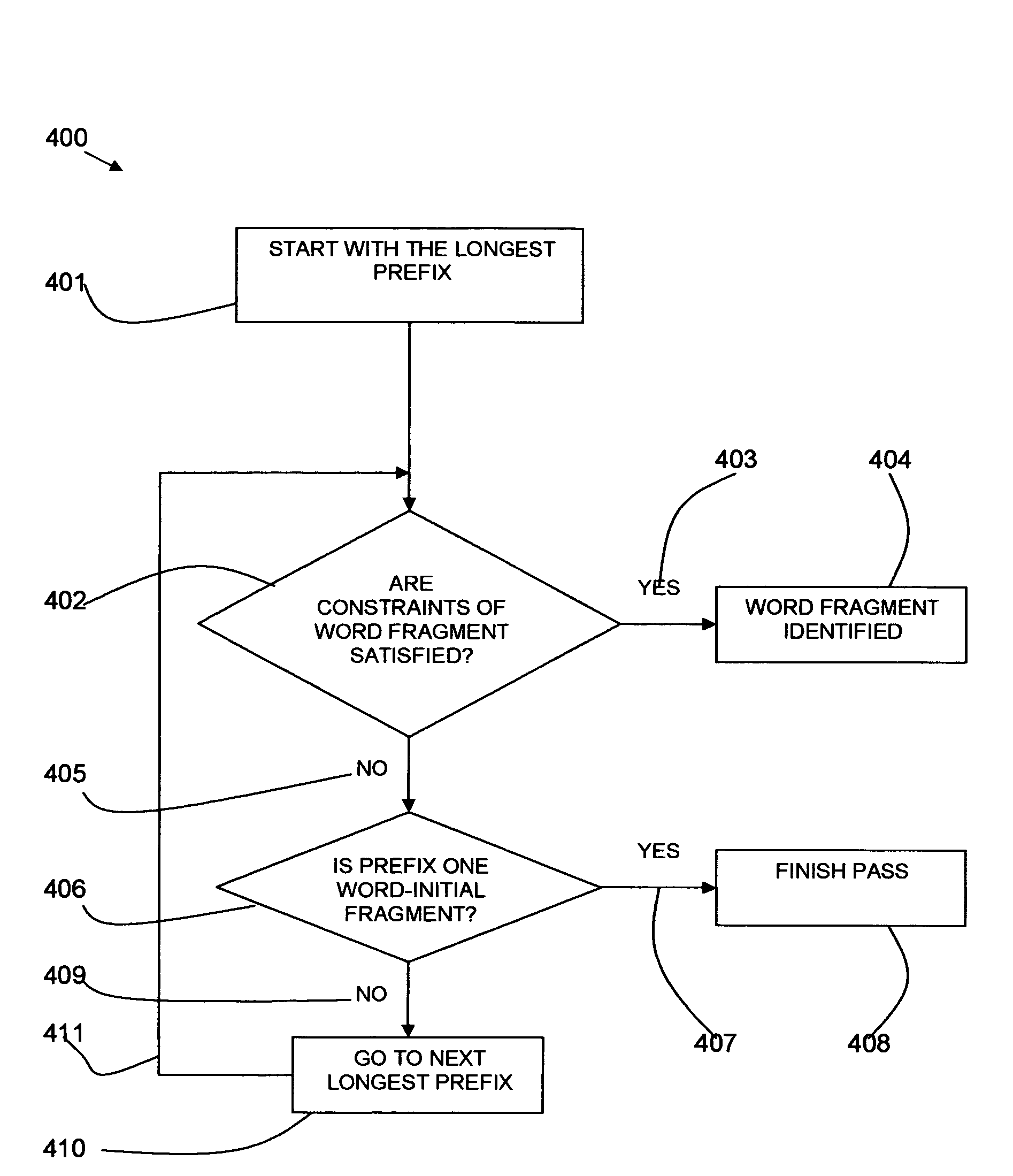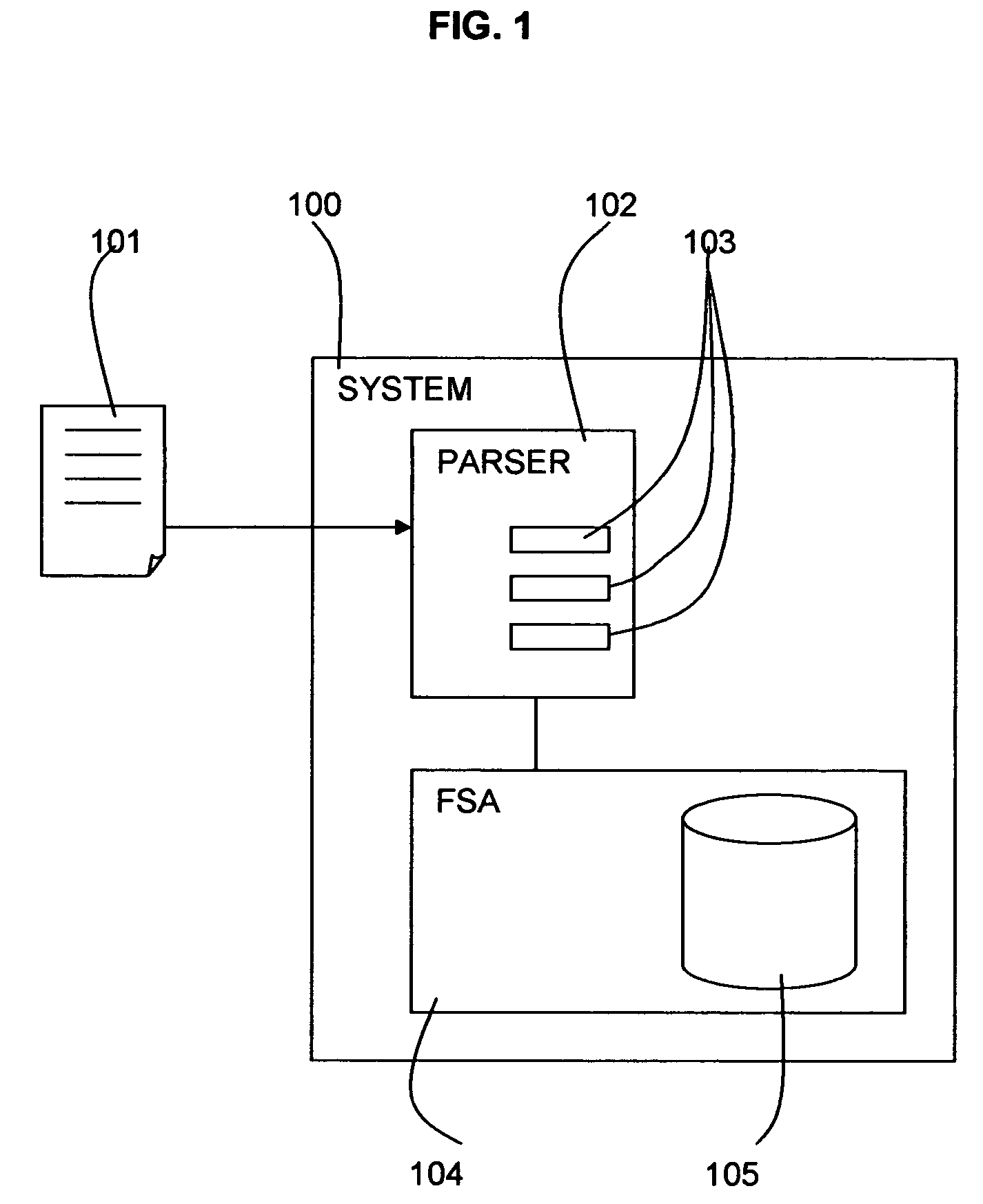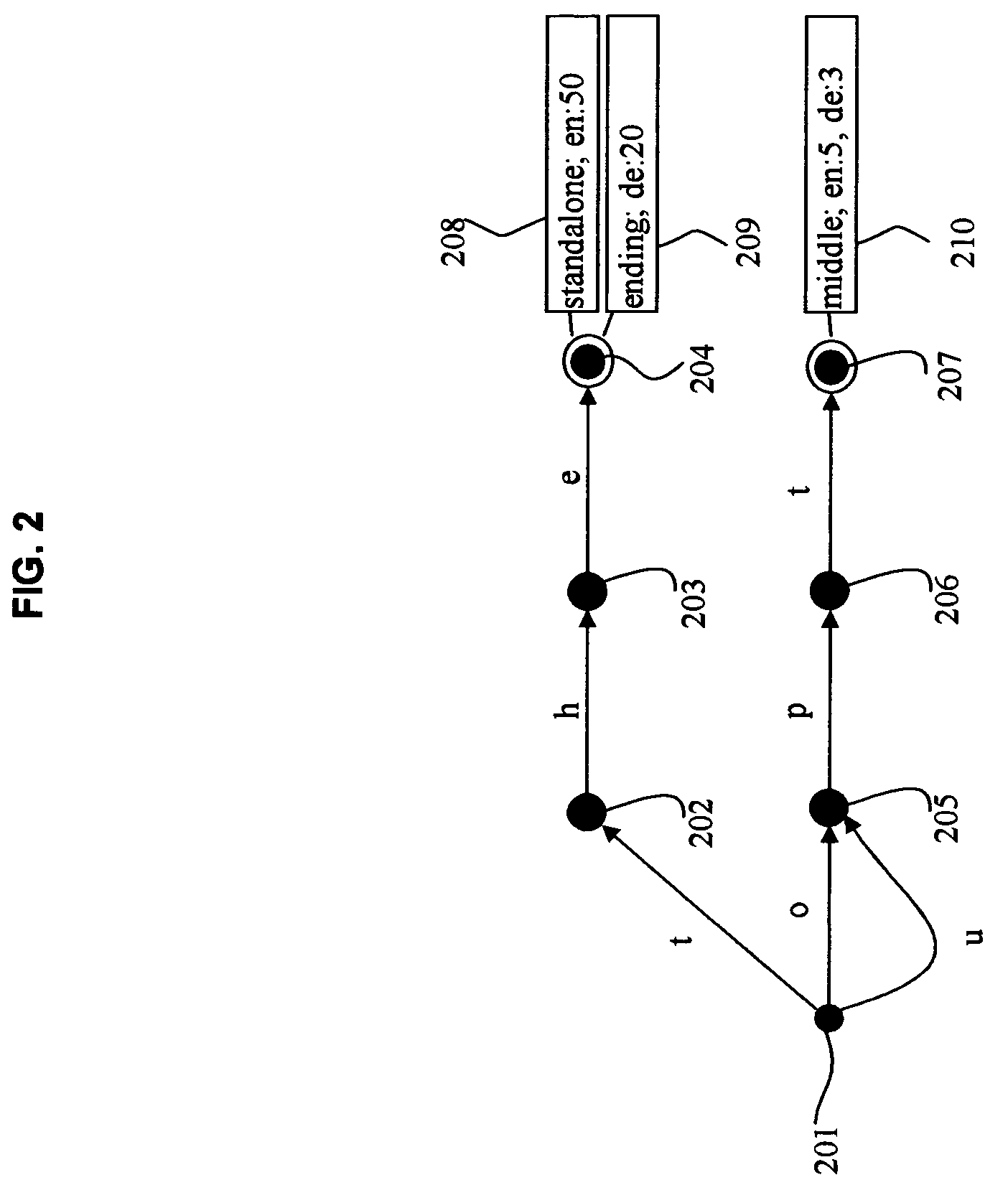Method and system for language identification
a language identification and language technology, applied in the field of automatic language identification of texts, can solve the problems of inability to identify texts in text, affecting the use of full-form lexicons,
- Summary
- Abstract
- Description
- Claims
- Application Information
AI Technical Summary
Benefits of technology
Problems solved by technology
Method used
Image
Examples
example
[0125]An example is given of telling between Norwegian Bokmal and Danish languages, which are closely related. Two lowercase dictionaries are used to create a combined wordlist, where every word is marked by the language(s) to which it belongs.
[0126]Next all character sub-sequences shorter than N=9 characters (purely for convenience to limit the number of sub-sequences) are generated. Two weights are assigned to every sub-sequence, which are the numbers of words in each language that contain the sub-sequence. Then all sub-sequences are removed except for those, which a) appear in only one language, and b) do not have shorter sub-sequences within them with same properties. Table 1 shows the first 10 rows of the result:
[0127]
TABLE 1Sub-sequenceLanguage# of words coveredSjonBokmal10558ighetBokmal8431RbeiBokmal5442BeidBokmal5400AsjoBokmal5196gheteBokmal4030ØjDanish3827NingernDanish3280LeggBokmal3264ThetBokmal2824
[0128]The presence of sub-sequences is detected by using a finite-state tra...
PUM
 Login to View More
Login to View More Abstract
Description
Claims
Application Information
 Login to View More
Login to View More - R&D
- Intellectual Property
- Life Sciences
- Materials
- Tech Scout
- Unparalleled Data Quality
- Higher Quality Content
- 60% Fewer Hallucinations
Browse by: Latest US Patents, China's latest patents, Technical Efficacy Thesaurus, Application Domain, Technology Topic, Popular Technical Reports.
© 2025 PatSnap. All rights reserved.Legal|Privacy policy|Modern Slavery Act Transparency Statement|Sitemap|About US| Contact US: help@patsnap.com



